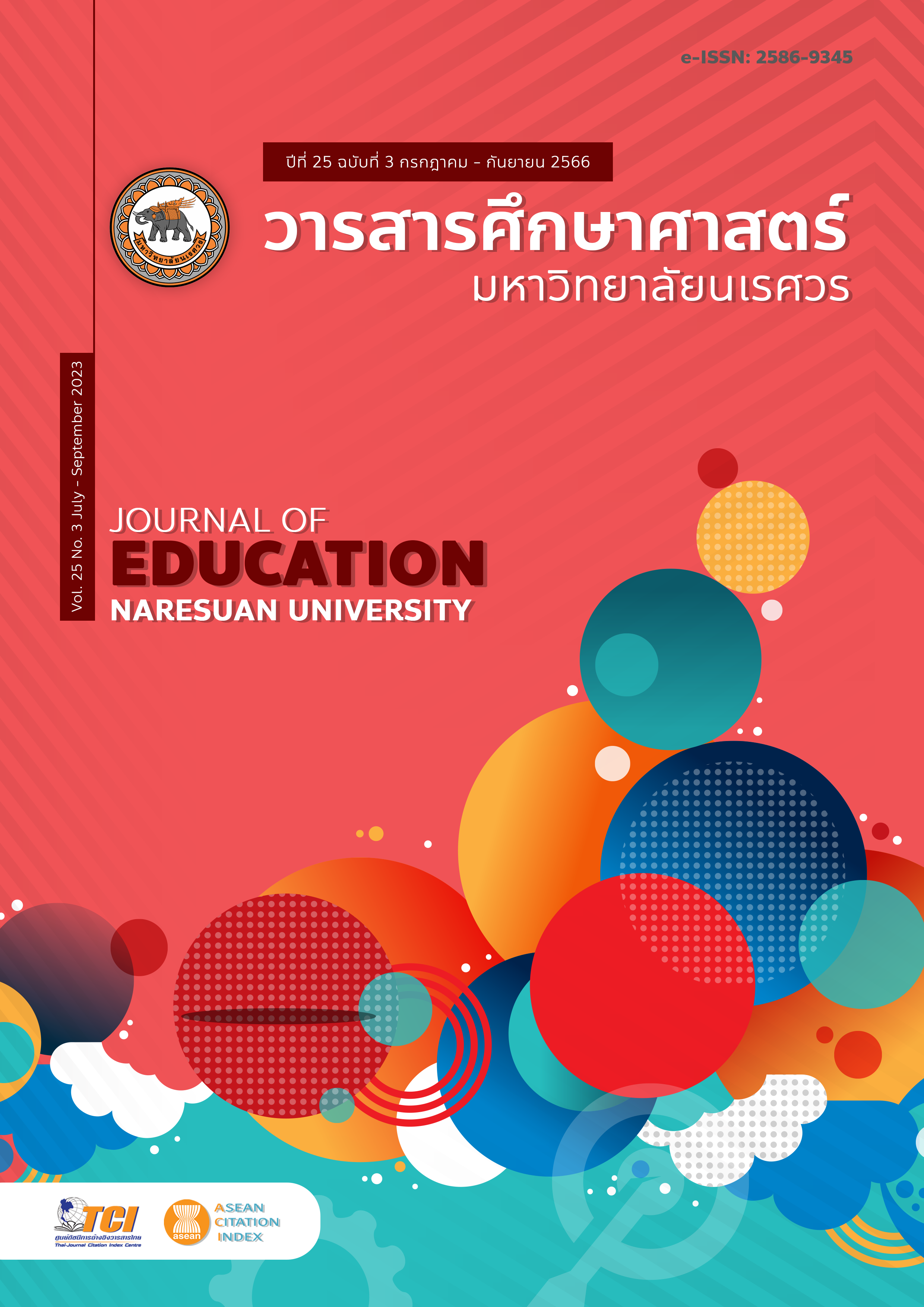INTEGRATING LEARNING MANAGEMENT AND COMMUNITY RESOURCES TO DEVELOP COMMERCIAL INNOVATION FOR OPPORTUNITY EXPANSION SCHOOL IN SI SAMRONG DISTRICT OF SUKHOTHAI PROVINCE การพัฒนาระบบการจัดการเรียนโดยบูรณาการแหล่งเรียนรู้ในชุมชนเพื่อการสร้างนวัตกรรมเชิงพาณิชย์ สำหรับโรงเรียนขยายโอกาส อำเภอศรีสำโรง จังหวัดสุโขทัย
Main Article Content
Abstract
The purposes of this research were; 1) to select the learning resources and knowledge in the community to create commercial innovation for opportunity expansion school in Si Samrong District, Sukhothai Province and 2) to develop the integrating learning management and community resources for developing commercial innovation for the opportunity expansion school in Si Samrong District, Sukhothai Province. The research was a mixed methods research and conducted by using Research and Development (R&D) and the concept of Participatory Action Research (PAR) with teachers as real practitioners. The research samples were; 1) experts, wisdom teachers and community leaders that related to the knowledge and learning resources in the community that selected by the community leaders in the total of 15 people in Sukhothai Province and 2) teachers and education personnel in junior high school of opportunity expansion school in Si Samrong District, Sukhothai Province from all subjects in learning area subjects, each person has their own courses and each course can be managed by integrating learning resources in the community for commercial innovation in 7 schools. They were selected by purposive sampling. The research instruments were; 1) integrating learning management and community resources in developing the commercial innovation for opportunity expansion school in Si Samrong District of Sukhothai Province and 2) the interviewing form. The research result revealed as follows:
1. The learning resources and knowledge in the community resources in creating the commercial innovation for opportunity expansion school in Si Samrong District, Sukhothai Province found 8 learning areas which consisted of 1) fine arts (handicraft), 2) skilled craftsmen, 3) home economics (food and medicine), 4) procedures, herbs, and medicine, 5) sufficiency economy and agriculture, 6) music, arts and culture, 7) product development, and 8) religious rituals. They were 170 wisdom experts and 75 knowledge and learning resources.
2. The integrating learning management and community resources to develop commercial innovation for opportunity expansion school in Si Samrong District, Sukhothai Province or Si-Samrong Model had the system component that was organized continuous relationship with 5 components which were 1) contextual analysis, 2) inputs, 3) social media and learning support technology, 4) the process of organizing learning activities by integrating learning resources in the community for commercial innovation, and 5) evaluation. The development process system had 6 steps as follows; 1) Objective analysis and subject area, 2) analysis of learning activities, 3) design of learning activities, 4) selection of learning media, 5) practice in classroom, and 6) evaluation of student's learning
Article Details

This work is licensed under a Creative Commons Attribution-NonCommercial-NoDerivatives 4.0 International License.
The owner of the article does not copy or violate any of its copyright. If any copyright infringement occurs or prosecution, in any case, the Editorial Board is not involved in all the rights to the owner of the article to be performed.
References
Ban Thap Phueng School. (2019). Academic Year 2018 Report of Ban Thap Phueng School. Sukhothai: Ban Thap Phueng School. [in Thai]
Burnett, B., & Evan, D. (2016). Design thinking. Retrieved from https://dscience.com/use-human-centered-design-get-jump-usability/ [in Thai]
Chantanee, A. (2014). Learning resources in the community. n.p. [in Thai]
Department of Academic Affairs. (2001). Basic Education Curriculum, B.E. 2001. Bangkok: Khurusapha. [in Thai]
Independent Commission for Education Reform. (2019). The Ministry of Education reform in Thailand report. Bangkok: Office of the Education Council. [in Thai]
Keesukkapan, E. (2019). School children expand opportunities to reduce the severity of the problem. Retrieved from https://www.thairath.co.th/news/society/1617406 [in Thai]
Ministry of Education. (2017). Early Childhood Curriculum A.D. 2017. Bangkok: Bureau of Academic Affairs and Educational Standards Office of the Basic Education Commission, Ministry of Education. [in Thai]
Natakuatoong, O. (2019). Integrated Course Design and Instructional Model Development. Professional and Organizational Development Network of Thailand Higher Education, 11-12, July 2019 at Ambassador Hotel, Bangkok. [in Thai]
Office of the National Education Commission. (2004). Guidelines for measuring and evaluating learning outcomes according to basic education courses. Bangkok: Ministry of Education. [in Thai]
Sittitanachai, T. (2009). Participatory action research to develop the management of learning resources at Ummao Prachasan School under The Office of Nakhon Phanom Educational Service Area 1. Sakon Nakhon Graduate Studies Journal, 7(27), 1-14. [in Thai]
Srisamrong District Public Library. (2020). Learning resources and wisdom. Retrieved from https://sites.google.com/sukho.nfe.go.th/libraryssr [in Thai]
Watthanakuljaroen, T. (2015). Development of a model for knowledge management of local wisdom via virtual learning community for instructional management at the primary education level in the Lower Central Region. Nonthaburi: Sukhothai Thammathirat University. [in Thai]


